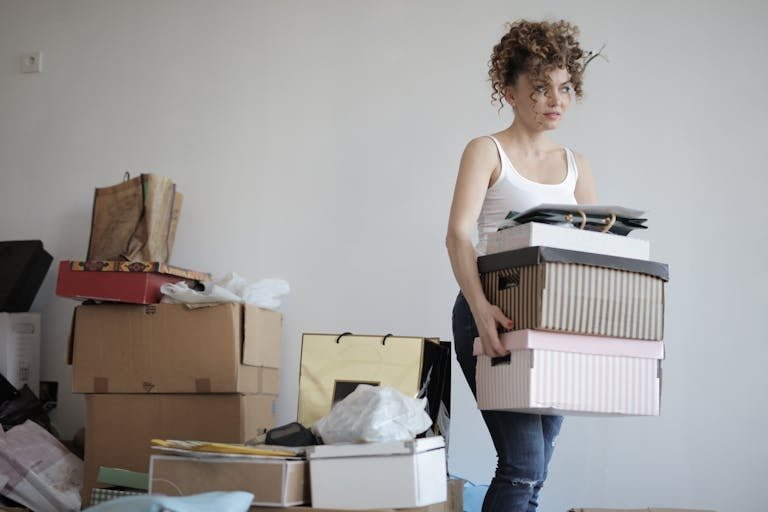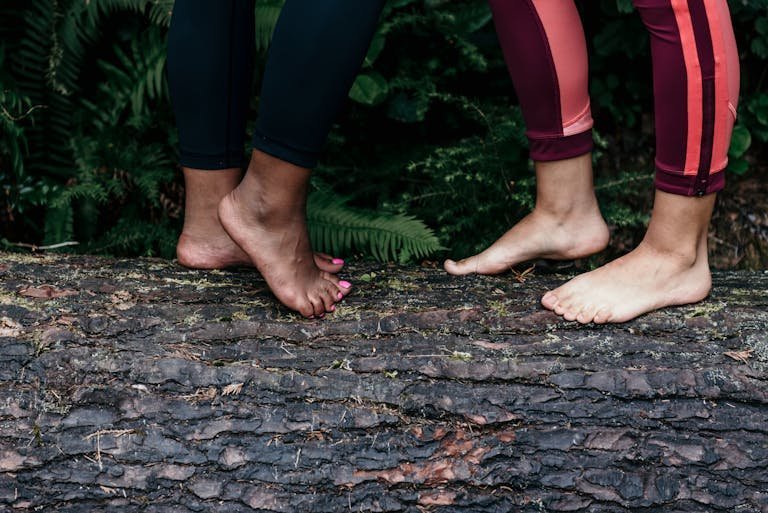What is Underconsumption Core? An Anti-Consumerist Lifestyle
In a world dominated by consumerism, a lifestyle movement “underconsumption core” is gaining popularity on Tik Tok and other socials. But what exactly is underconsumption core and how does it differ from the minimalist that I practice? Today, we’ll explore its principles, practices, and potential impact.
Defining Underconsumption Core
This is a radical lifestyle philosophy that goes beyond traditional minimalism or simple living. At its heart, it’s about drastically reducing overall consumption and actively challenging the foundations of consumer culture. It’s a fundamental shift in how one approaches consumption, material possessions, and the role of “stuff” in our lives.
What are the Key Principles?
- Radical Reduction: The primary goal is to reduce consumption to the bare minimum necessary for a healthy, fulfilling life.
- Environmental Focus: A key motivator is reducing one’s ecological footprint and combating the environmental impact of overconsumption.
- Anti-Consumerist Stance: Underconsumption core actively challenges and rejects consumer culture and capitalist notions of constant growth.
- Emphasis on Repair and Reuse: Instead of replacing items, there’s a strong focus on repairing, repurposing, and making do with what’s already available.
- Sharing Economy: Participation in community sharing, buy-nothing groups, and collaborative consumption is encouraged.
- DIY Ethic: There’s a strong emphasis on self-sufficiency and creating or growing what you need when possible.
- Mindful Acquisition: Any new acquisitions are carefully considered for their long-term utility and impact.
Underconsumption Core vs. Minimalism
While underconsumption core shares some some similarities with minimalism, there are key differences:
- Motivation: Minimalism focuses on the internal — how your life could be better with less! This naturally looks at the personal benefits like simplification of your living spaces to reduce stress improve focus and save you time. Underconsumption core is primarily driven by the external and focuses on environmental and societal concerns.
- Aesthetics: Originating from the Minimalism art movement, it is often associated with a particular aesthetic (think sleek, white spaces). The simplicity of the minimalist aesthetic is important to my practice and helps shape my decisions when replacing items in my home. Underconsumption core is less concerned with how things look, but rather the utility of the thing.
- Purchasing Habits: As Minimalists, we still buy new items and we focus on quality over quantity. Followers of underconsumption core aim to avoid new purchases altogether when possible.
Practicing Underconsumption Core
Embracing underconsumption core can involve:
- Conducting a consumption audit to identify areas of unnecessary consumption
- Learning repair skills to extend the life of existing possessions
- Participating in local sharing economies and buy-nothing groups
- Growing food, even in small spaces like balconies or windowsills
- Embracing “make do and mend” for clothing and household items
- Reducing energy consumption through low-tech solutions
- Questioning every potential purchase: “Do I really need this? Can I borrow, make, or do without it?”
- Engaging in community activism around issues of overconsumption and environmental protection
The Impact of Underconsumption Core

There is a lot here to be inspired by. For instance, adopting underconsumption core principles can lead to:
- Significantly reduced environmental impact
- Lower personal expenses and potential financial freedom
- Increased self-sufficiency and practical skills
- Stronger community connections through sharing and collaboration
- A shift in focus from material possessions to experiences and relationships
- Potential improvements in mental health by reducing the stress of constant consumption
What are the Challenges?
While the philosophy has many benefits, it’s not without its challenges:
- Social Pressure: Going against societal norms of consumption can be difficult and may face pushback from friends and family.
- Time Investment: Repairing items and DIY projects often require more time than simply buying new.
- Availability of Goods: In some areas, it may be challenging to find secondhand items or participate in sharing economies.
- Balancing Needs: Determining what’s truly necessary versus what can be eliminated can be a complex process.
- Systemic Barriers: Some aspects of overconsumption are built into our societal systems and can be challenging to overcome on an individual level.
Some argue that underconsumption core is not a lifestyle but rather how normal people live. I think that is somewhat misguided in our modern world. Normal for so many is to buy new, replace and update in an endless cycle. This is fuelled by the planned obsolescence of many modern consumer goods, the loss of skills to repair and the proliferation of many cheap replacements. The incentive to live an underconsumption core life for many is simply not there.
Is this Lifestyle for Everyone?
The principles of underconsumption core seem honourable and could benefit anyone. Adopting it as a full lifestyle is challenging and may not be feasible or desirable for everyone. That said, I believe many of us could find value in incorporating some underconsumption core practices into our lives, even if we don’t feel we could ever fully embrace the lifestyle.
The Future of Underconsumption Core
As environmental concerns grow and more people seek alternatives to consumer culture, underconsumption core feels like it will continue to gain more followers. If it can gain sufficient momentum, it might even influence broader societal shifts towards more sustainable consumption patterns and challenge current economic models based on constant growth and consumption.
So In Conclusion
Underconsumption core represents a radical response to the environmental and social challenges posed by overconsumption. By questioning our relationship with material goods and actively reducing our consumption, followers of this philosophy aim to create a more sustainable and fulfilling way of life. Whether you’re ready to fully embrace this lifestyle or simply curious about incorporating some of its principles, this movement offers valuable insights into how we can live more consciously in a consumer-driven world.
What are your thoughts on underconsumption core? Could you see yourself adopting some of these practices? We’d love to hear your perspectives in the comments below!
Before you go!
If you found this article useful why not take a look at some of our other articles on minimalism, decluttering, grounding, intentional living and health living,







